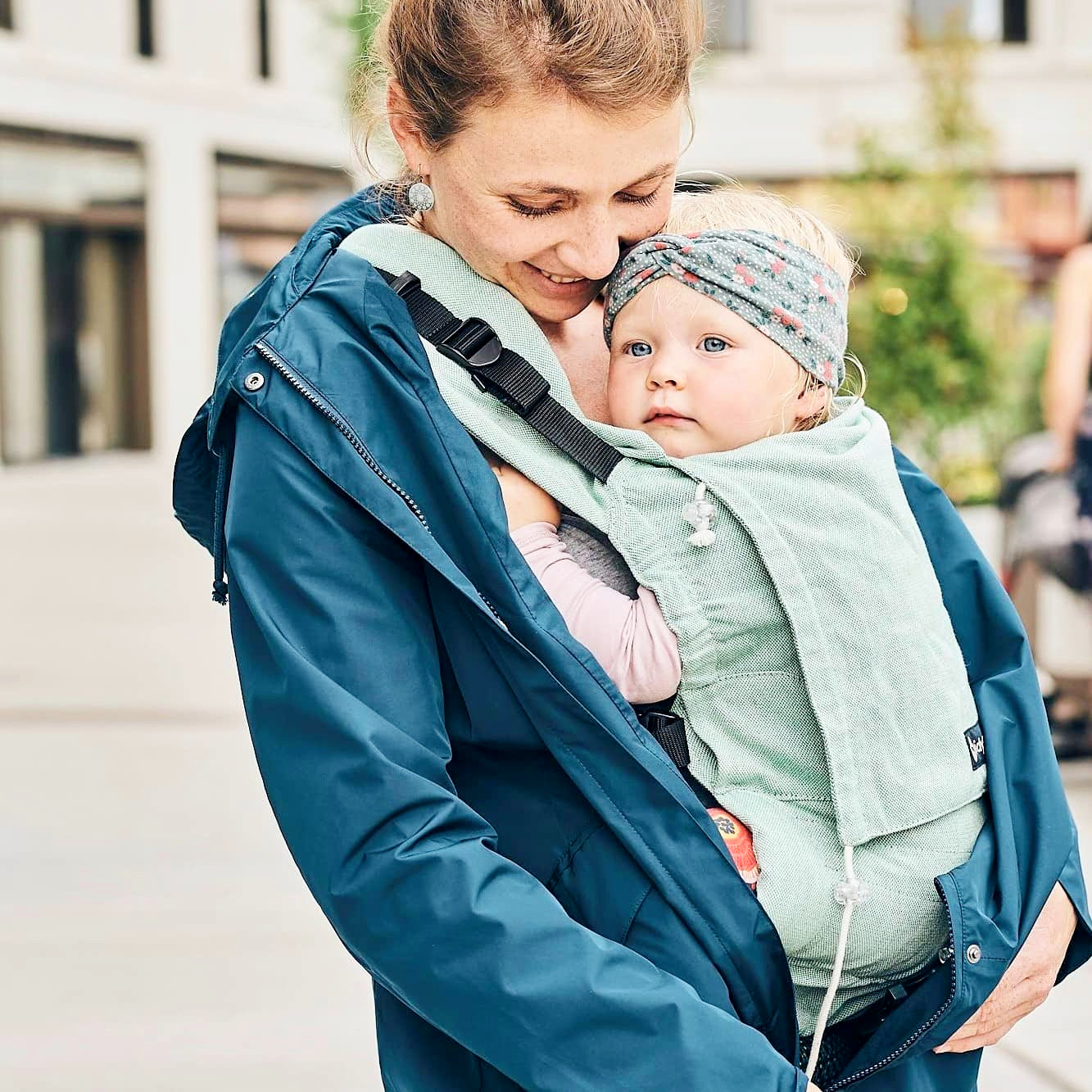Choosing the perfect baby wrap sling (for you) - how do you do it?
.jpg) As a babywearing consultant at DIDYMOS, I am often asked what to look for when choosing a newborn wrap. There are so many beautiful wraps out there, but how do you go about finding the right one? What are the key factors? Is a jersey (elastic or stretchy wrap) better for newborns or a woven wrap? This blog post will help you find your perfect newborn sling, with filter tips in our online shop 😊
As a babywearing consultant at DIDYMOS, I am often asked what to look for when choosing a newborn wrap. There are so many beautiful wraps out there, but how do you go about finding the right one? What are the key factors? Is a jersey (elastic or stretchy wrap) better for newborns or a woven wrap? This blog post will help you find your perfect newborn sling, with filter tips in our online shop 😊
Elastic or woven wrap for my baby?
Our jersey wraps are hybrid wraps, i.e. they are not only suitable for very small and lightweight babies, but also for larger children up to around 12 kg.
Knitted in Germany in the Swabian Jura, they contain no elastane and therefore do not wear out, which sets them apart from many other stretchy wraps. They are also as soft as your favourite T-shirt.
The woven wrap has no weight limit - you can carry your baby in a woven wrap from prematurity to the end of your individual babywearing journey. There are numerous ways to tie the wrap and there is one to suit every babywearing couple and every need. You will be amazed!
What is grammage about?
Some of the most frequently asked questions are: Which grammage should I choose? What is it actually?
The grammage is the weight of the sling per square metre. The unit of measurement therefore indicates how thick and heavy a sling is.
Slings that are not too heavy are best suited for premature babies and newborns. Slings with a surface weight of less than 190 g/m² are considered very light and an all-round weight is approx. 200-240 g/m².
First of all, you can carry your baby in any weight wrap until the end of your individual babywearing period!
It is more important to make sure that you tie the wrap correctly and that your baby sits tightly in the wrap.
The material of the baby wrap - a significant aspect
For the yarns from which our wraps are woven, we only use raw materials from controlled organic cultivation (kbA) or controlled organic animal agriculture. Regular tests also prove that the natural fibres and colours we use are free of harmful substances! This is good for our youngest customers, as the fabrics are particularly skin-friendly, and for all of us, as we only produce ecologically sound products.
Thin and soft wraps made from fine materials such as cashmere or wool/silk are particularly great for newborns and sensitive children. Our jersey wraps are also great! Linen wraps become soft very quickly and are a good choice in summer, as linen has excellent cooling properties.
Is there a wrap design that is particularly suitable for my little baby?
Our wraps in the Prima, Doubleface/Jacquard and Lisca patterns are particularly suitable for newborns and first-time babywearers because they are very soft and especially easy to tie.
Finding the right wrap size
There are many wrap sizes for different clothing sizes and tying methods. Here you can find an overview of our sling sizes and which tying methods are possible with them. Use our interactive size guide to find out your size!
If different people are carrying the baby, clarify who is carrying the most and choose the appropriate size - if in doubt, choose the longer option.
So much for the introduction, let's get started!
How to find the perfect newborn wrap in our shop - quick guide:
Use our filter function!
- Tick all boxes up to 240 g/m² directly in the filter function in our shop
- choose your favourite material
- choose your size
And now you have a fine selection of slings that meet your personal requirements. Now just choose the wrap that appeals to you most visually.
After all, the wrap also "dresses" you.
DidyTip: Use the sling during pregnancy to relieve pressure:
In the third trimester, many pregnant people are plagued by back pain. You can use your sling to relieve the pain. Eva Vogelgesang, paediatric nurse in neonatology, IBCLC and trainer at the Didymos babywearing school shows you how to do it here on the clinic portal .
Still undecided? We are here for you! Write to us, give us a call, or drop by our shop in Ludwigsburg!
This blog was written by Viktoria Drané








